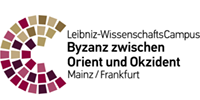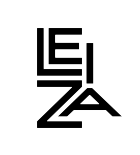Speaking of War: Moldavian and Wallachian Perceptions to the Ottoman Threat during the 14th-16th Centuries
When you find yourself in the way of the territorial expansion of a military force such as the Ottoman Empire, you prepare yourself for war. However, the need to defend your very own existence is not the only reason for a state to go to war, especially when the enemy you are about to meet on the battlefield has an altogether different religion and culture. This is the case of Moldavia and Wallachia. They were not fighting only to defend themselves, but the entire Christendom. Moreover, their enemy was not an ordinary one. By the time the Danubian Principalities had to face them, Turks were already considered the enemies of Christ and of the Christian faith.
This project investigates the motivation and the religious means of legitimation behind the wars that the Danubian Principalities, Moldavia and Wallachia, waged against the Ottoman Empire during the 14th and 16th centuries. The aim is to determine the religious arguments that form the conception of war of the Danubian Principalities during the period under consideration. A key theme of this topic that will require further examination is the image of the Turkish religious and cultural Other and the role it played in the shaping of their war ideology. Given the fact that religion plays a major role in their reciprocal perception, how is this religious difference inserted in their ideological discourse? Did Moldavians or Wallachians described at any point their anti-Ottoman wars as just wars or some sort of a crusade? Can be motifs such as 'fighting the enemies of God', 'Martyrdom' or 'salvation of soul' for the fallen against Turks, 'antemurale Christianitatis' identified? Did the fall of Constantinople in 1453 influence their discourse and determine a change?
In the attempt to uncover the correlation between the representations of the Turkish Other and the conception of war for the two states in question different types of sources such as chronicles, private and diplomatic letters will provide both the official and personal stand, whilst diptychs and monumental inscriptions will provide information about the attitude towards the fallen against Turks.
In order to shed light on the war ideology against the Ottomans and its religious patterns an interesting approach would be to compare it also with the war ideology against Christians. During the 14th-16th centuries, Moldavia and Wallachia found themselves at war on numerous occasions with the neighbouring kingdoms, and even one against the other. Why and how was it different to wage war against the Ottoman Empire from waging war against other enemies? Which are the religious arguments of fighting and killing other Christians or are there none, and what means that? Such investigations are already available for the Byzantine Empire and for some European kingdoms of the time in similar situations. However, for the Romanian Principalities the approach of this topic is, so far, only fragmentarily or tangentially.
Betreuung:
Univ.-Prof. Dr. Hans-Christian Maner













